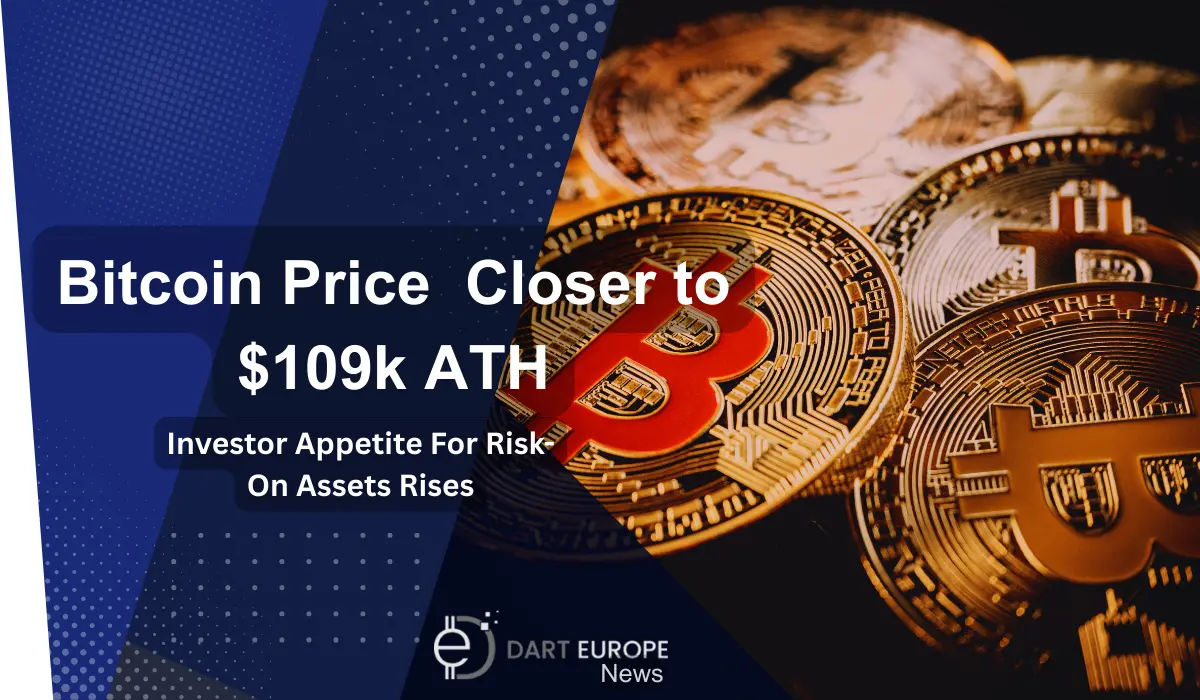Bitcoin (BTC), the world’s largest cryptocurrency by market capitalization, is trading shy of its peak valuation amid renewed interest in spot BTC exchange-traded funds (ETFs) and investors’ being drawn back into risk assets due to shifting global economic conditions.
Bitcoin 3% Away From Touching January’s All-Time High
The flagship crypto asset’s price touched $107,000 on Sunday evening, crossing the recent high of around $106,500 recorded on May 12. While Bitcoin dipped shortly after, it is currently changing hands between $103,000 and $105,000. BTC has spiked nearly 25% over the past 30 days, and is only 3% away from its all-time high of $108,786 set on January 20, the day President Donald Trump was inaugurated.
Previous Bitcoin rallies were often powered by speculation in the retail market; however, this time it is being supercharged by heavy inflows into spot Bitcoin ETFs, stable interest rate expectations, and renewed debate surrounding inflation as Trump’s proposed tariffs on goods imported from America’s trading partners come back into play.
In a note to investors, QCP Capital wrote that they expect digital assets to rally, especially considering Coinbase’s inclusion in the S&P 500 Index. The Singapore-based market analytics firm added that the index inclusion tends to act as a short-term price catalyst as investment managers adjust their allocations to track the benchmark more closely.
Bitcoin ETFs See Largest Daily Inflow, Reach $41.77B Total
Data from SoSoValue shows that US spot Bitcoin ETFs attracted more than $3.8 billion in net inflows in May, with the largest single-day gain of the year of $674.9 million coming on May 2. As of May 16, cumulative flows stand at $41.77 billion, with total assets under management (AUM) for the 11 ETFs trading in the US having surpassed $122 billion.
Macro market conditions have also contributed to Bitcoin’s latest rally. Last week, the US Federal Reserve announced that it will keep its benchmark interest rate on the dollar unchanged at 4.25% to 4.50%, choosing to maintain a cautious stance amid mixed economic signals.
Fed chairman Jerome Powell said that the central bank is taking precautionary measures to respond to evolving economic data, partly because inflation remains a major concern as the Trump administration’s trade policies are expected to have major implications on the supply chains. However, Powell offered no indication of an imminent shift in the Fed’s policy.
The markets have been offered some relief by news that the US and China have agreed to pause any tariffs for 90 days as they finalize a trade deal. However, increased duties on electric vehicles, semiconductors, and consumer electronics will remain the same.
Trump Goes to War with the Federal Reserve as American Retailers Increase Prices
American retail giant Walmart said last week that it plans to raise prices on products affected by the tariffs either this month or early in the summer. Speaking to the Wall Street Journal, Walmart CIO, John Davd Rainey, said that the “magnitude and speed” at which the company is being affected by the prices is “unprecedented in history”.
The country’s largest retailer, employing 1.5 million people, did not issue a profit forecast for the first quarter, citing uncertainty over how much of its profit will be absorbed by costs to remain competitive. Walmart’s stance adds to the broader concerns that trade-related price increases could complicate the inflation outlook, prompting investors to reassess how sustained price pressures may shape US monetary policy and risk sentiment across different asset classes, including crypto.
Trump came out lashing against Walmart’s decision to increase prices, asking them to “eat the tariffs” instead of blaming the duties imposed by his government on imported goods. In a Truth Social post, the President wrote that Walmart made “BILLIONS OF DOLLARS last year, far more than expected” and they should not be charging customers for “ANYTHING”, adding that he will be watching the development closely.
On Saturday, Trump repeated his calls for the Fed to cut its benchmark rates, claiming that inflationary pressures have largely disappeared. The Consumer Price Index (CPI) for April came in at 2.4% – its lowest level since 2021, indicative of the economic policies enacted by the second Trump administration delivering promised results.
Bitcoin Transaction Fees Increase as Demand for the Apex Crypto on the Rise
Meanwhile, price increases and subsequent demand for Bitcoin have resulted in transaction fees on the blockchain inching higher. According to data sourced by The Block, the seven-day moving average for Bitcoin’s transaction fee increased by about $1 this month, with the $2.50 per transaction rate being the highest recorded so far in 2025.
Bitcoin’s market dominance also increased after a pullback two weeks ago, causing the altcoin market to rally. This could be a signal that a dip in BTC price compared to the rest of the market was driven largely by liquidity rather than a major paradigm shift towards an “altcoin season”.
However, increased transaction costs have seemingly been offset by a decrease in the average number of daily transactions, which has fallen off a cliff. Monthly transactions on the Bitcoin network dropped from its yearly high of 507,000 in April to 330,000 in May, a 35% decline.
Meanwhile, Bitcoin’s illiquid supply – the amount of BTC in wallets with minimal spending – recently hit a new all-time high. There has also been a considerable decrease in the supply available on exchanges, which means that increased demand can potentially trigger a supply shock and a surge in price.
At the time of writing, BTC is trading at $102,944, down 0.64% over the last 24 hours.

